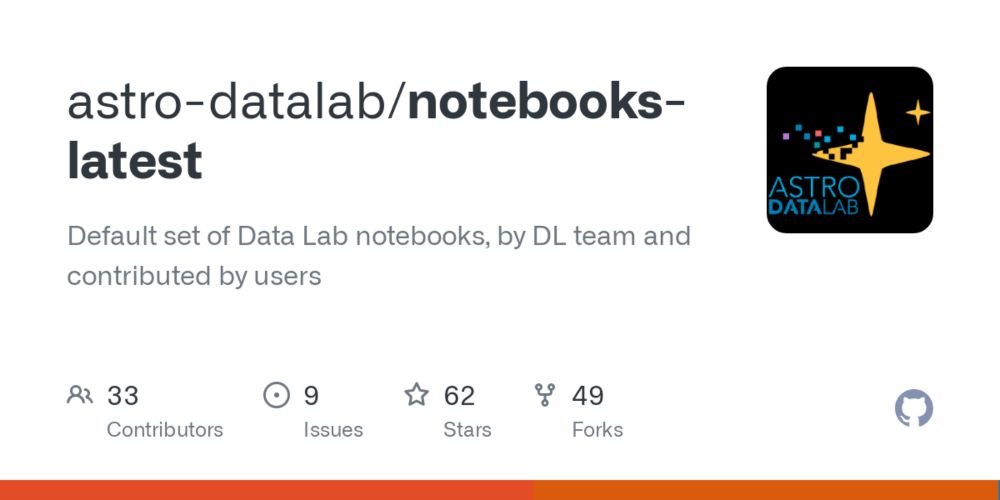Follow the @usngo.bsky.social for our image of the week series and many other news and resources about the International Gemini Observatory at @noirlabastro.bsky.social @noirlabastroes.bsky.social #astronomy
03.04.2025 15:24 — 👍 15 🔁 4 💬 0 📌 0

Angled from the upper left corner to the lower right corner is a cone-shaped orange-red cloud known as Herbig-Haro 49/50. This feature takes up about three-fourths of the length of this angle. The upper left end of this feature has a translucent, rounded end. The conical feature widens slightly from the rounded end at the upper right down to the lower right. Along the cone there are additional rounded edges, like edges of a wave, and intricate foamy-like details, as well as a clearer view of the black background of space. In the upper left, overlapping with the rounded end of Herbig-Haro 49/50, is a background spiral galaxy with a concentrated blue center that fades outward to blend with red spiral arms. The background of space is speckled with some white stars and smaller, more numerous, fainter white galaxies throughout.
NEW: #NASAWebb reveals a distant spiral galaxy perfectly aligned near the tip of Herbig-Haro 49/50—an outflow generated by a nearby still-forming star. This near- and mid-infrared image uncovers intricate details about how stars form: webbtelescope.pub/4iGQg9K 🔭 🧪
24.03.2025 14:04 — 👍 253 🔁 58 💬 5 📌 9
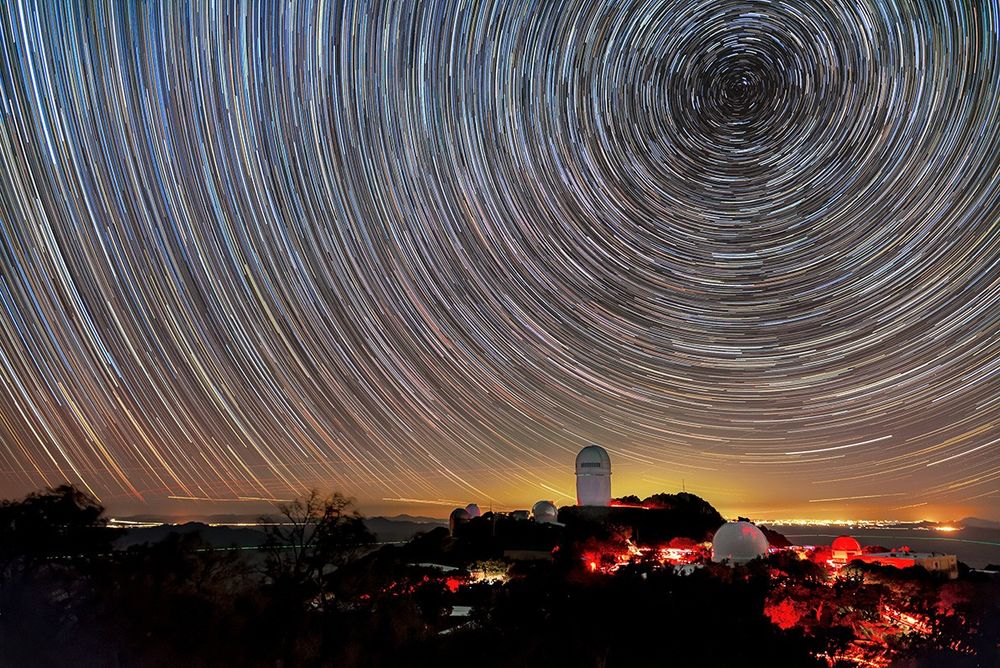
A long-exposure image captures circular star trails above telescope domes illuminated in red light on a dark mountain. A golden glow on the horizon marks distant city lights.

A person reaches out a tool to clean a large mirror, surrounded by an intricate framework of metal structures.
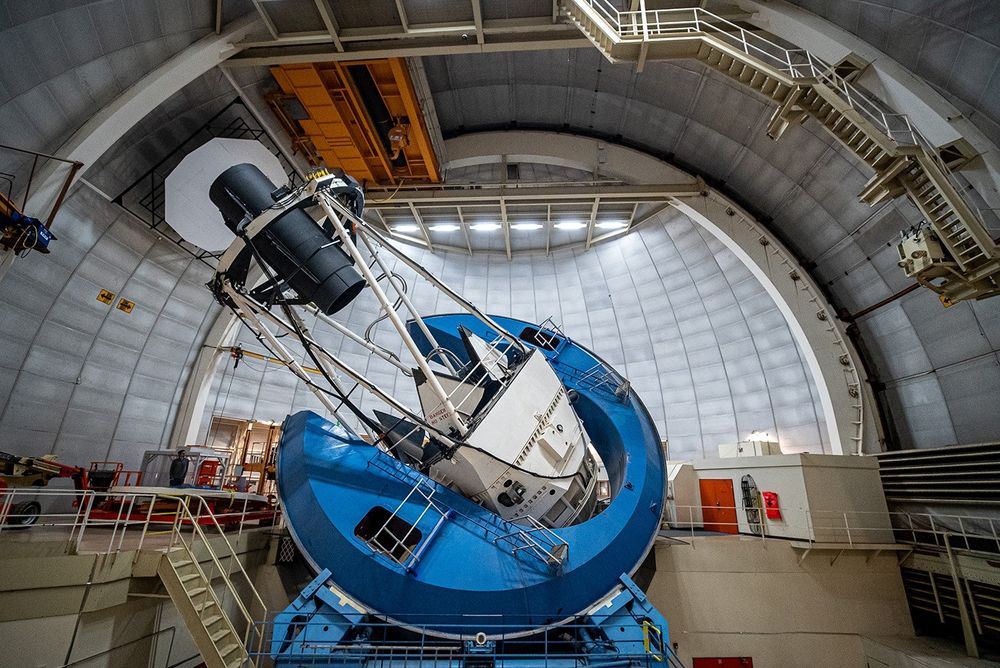
DESI’s instrument, a long black cylinder supported by the metal framework of the telescope, points at the domed ceiling.
🔭👀 New results from the @desisurvey.bsky.social strengthen hints that #DarkEnergy might evolve.
News release ⬇️
newscenter.lbl.gov/2025/03/19/n...
#Space #arXiv 🧪
19.03.2025 22:06 — 👍 38 🔁 13 💬 4 📌 3
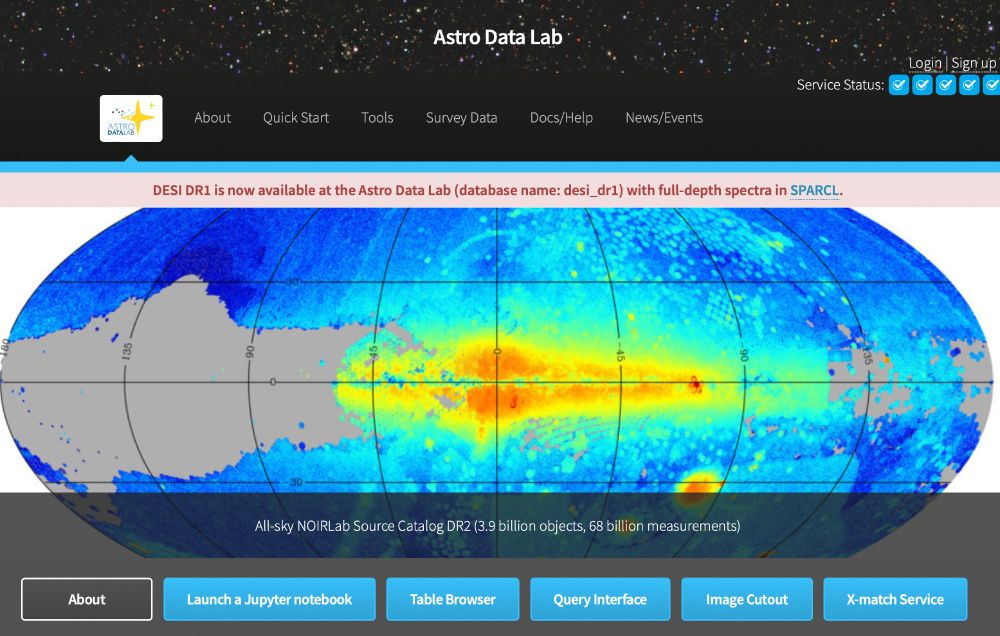
🔭 We're ready with the DESI DR1 database and 23 million spectra in the SPARCL searchable spectral database. These services are best suited for public access for astronomy questions and we worked closely with the DESI data team 🤝
Data Lab: datalab.noirlab.edu
SPARCL: astrosparcl.datalab.noirlab.edu
19.03.2025 23:00 — 👍 7 🔁 0 💬 0 📌 0
@desisurvey.bsky.social has *two* big releases
1) Exciting results with stronger hints of evolving dark energy based on three years of data
2) First year of data (DR1): spectra for >18 million objects in the main survey! At the Data Lab, we provide a database version for convenient data access 🔭✨
19.03.2025 22:43 — 👍 8 🔁 1 💬 0 📌 0
T - 2 hours!
19.03.2025 20:04 — 👍 0 🔁 0 💬 0 📌 0

A large galaxy is at center, and a significantly smaller galaxy is to its left. The large galaxy, nicknamed the Bullseye, is mostly face-on, but the top appears slightly tilted away. It has several rings. Its circular core is bright white at the very center, but light yellow overall. Going outward, there are gaps between the rings. The core is surrounded by two slightly lighter yellow rings, which also appear to be overlapping. The next ring is slightly more transparent and yellow. The two or three rings that are farther out are bluer, sometimes with blue clumps. The widest ring is also blue, but also the most transparent. At 9 o’clock is a small dwarf galaxy. It is about the same size as the yellow core of the Bullseye. The dwarf galaxy is blue, with many dots. It looks like the edge of the Bullseye might touch the dwarf galaxy. Both galaxies are set on the black background of space, which is dotted with a range of galaxies in different shapes, colors, and sizes.
Bullseye! Researchers using Hubble found a massive galaxy rippling with nine star-filled rings after an “arrow,” the blue dwarf galaxy to its center-left, plunged through its core 50 million years ago. A thin trail of gas still links the pair: bit.ly/4hcX52n 🔭 🧪
04.02.2025 15:04 — 👍 273 🔁 68 💬 0 📌 7
NOIRLab Newsletter 2025/01
✨January 2025 updates✨
- Added 6 datasets: Palomar Gattini-IR (PGIR) DR1, S-PLUS DR4, DES Y6 Gold, PHAT v3, DeMCELS DR1, SDSS DR12 stellar mass VACs
- Added 4 Jupyter notebooks to our collection available to all users and on GitHub
Read more in our Newsletter! datalab.noirlab.edu/newsletters/...
31.01.2025 01:05 — 👍 1 🔁 1 💬 0 📌 0
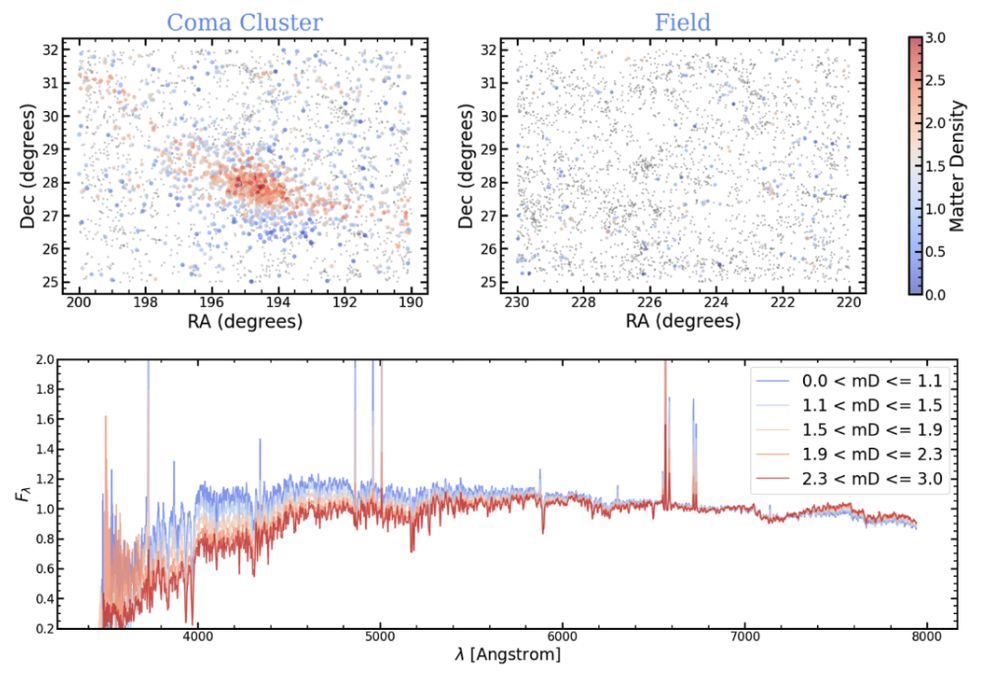
📣Undergrad student Isabella Olin is presenting her #aas245 iPoster 465.04 soon (1-2pm) on SDSS/BOSS Large Scale Structure and the "Cosmic Slime" Value-Added Catalog, where she investigates the impact of environment on galaxy quenching
She contributed a new Jupyter notebook on her work (link below)
16.01.2025 17:43 — 👍 1 🔁 0 💬 1 📌 1
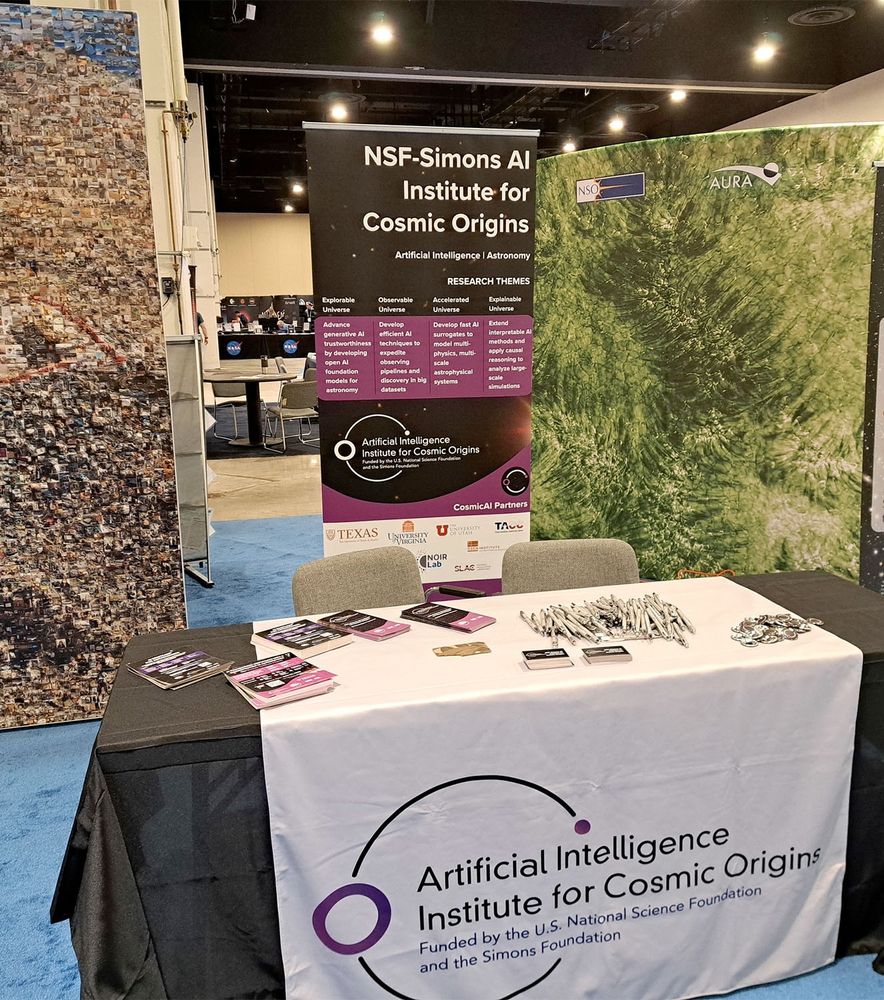
This week NSF-Simons AI Institute for Cosmic Origins is at the @aasoffice.bsky.social Meeting in Washington D.C. Please stop by our table for more info and swag!
Follow us for updates on our latest research, professional events, and opportunities to collaborate with leaders in astronomy and AI.
13.01.2025 17:29 — 👍 2 🔁 1 💬 0 📌 0
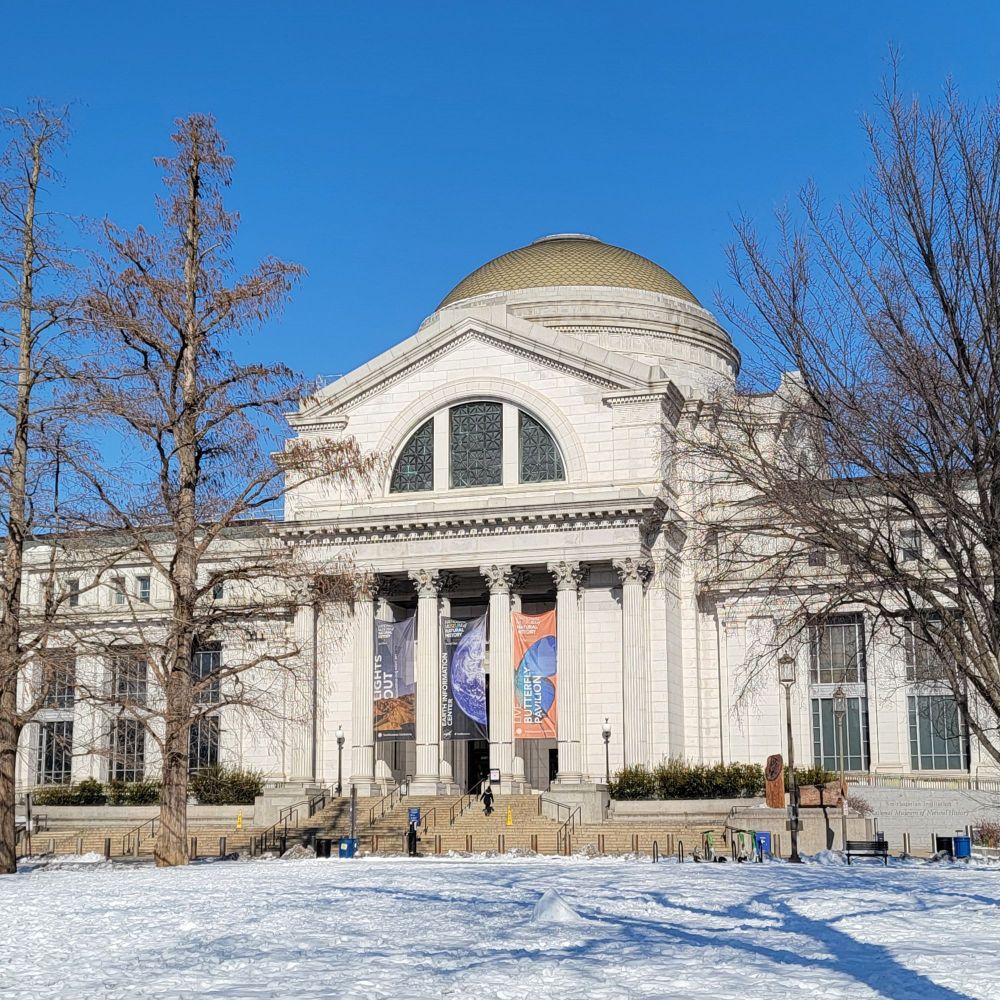
Photo of facade of the natural history museum in Washington DC in the snow
PSA: if you're going to #AAS245 in Washington DC.
There is a sample of #asteroid #Bennu on display at the Smithsonian National Museum of Natural History! Also a Mars meteorite you can *touch*! #ToBennuAndBack
🧪🔭
12.01.2025 18:49 — 👍 66 🔁 8 💬 0 📌 0
We are the Astro Data Lab science platform to facilitate research by astronomers and students. We're a program of NSF NOIRLab and our team is a mix of professional astronomers and software developers. We like to share astronomy and tutorial updates for the astro community!
11.01.2025 05:11 — 👍 1 🔁 0 💬 1 📌 0
Yes
11.01.2025 05:06 — 👍 0 🔁 0 💬 1 📌 0
@bot.astronomy.blue signup
11.01.2025 05:05 — 👍 1 🔁 0 💬 1 📌 0
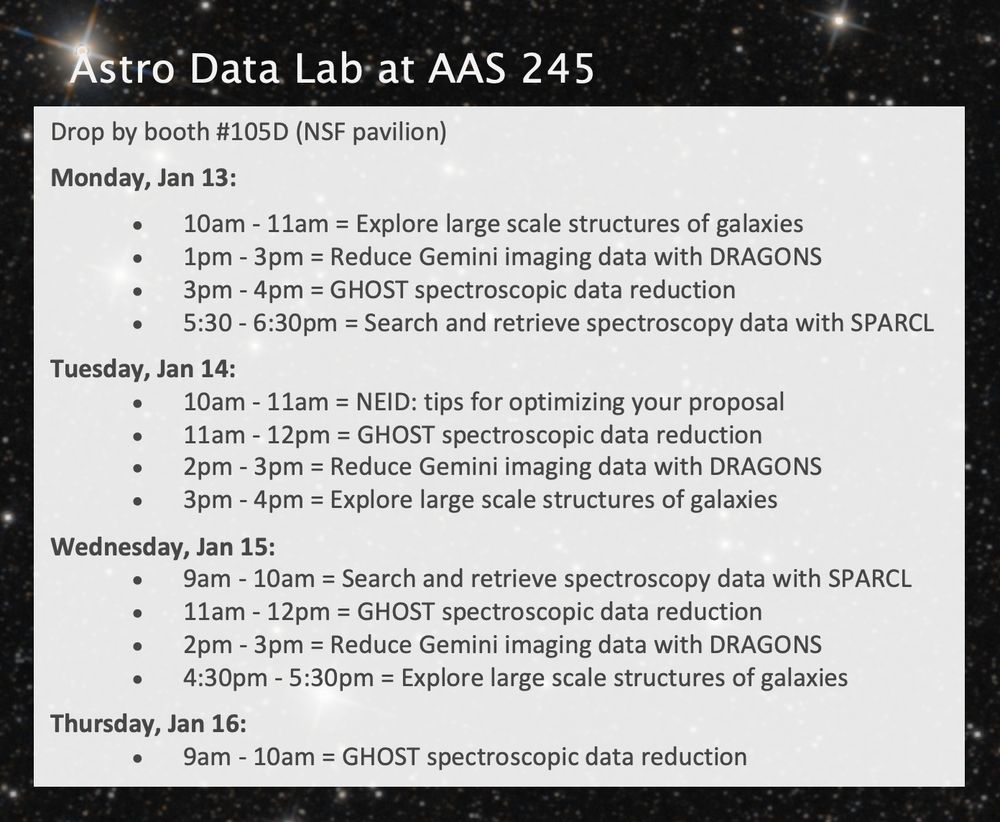
Schedule for the Astro Data Lab demos at the AAS245 meeting. Demos are at booth #105D in the NSF pavilion. The list of demos per day is the following.
Monday, Jan 13:
10am - 11am = Explore large scale structures of galaxies
1pm - 3pm = Reduce Gemini imaging data with DRAGONS
3pm - 4pm = GHOST spectroscopic data reduction
5:30 - 6:30pm = Search and retrieve spectroscopy data with SPARCL
Tuesday, Jan 14:
10am - 11am = NEID: tips for optimizing your proposal
11am - 12pm = GHOST spectroscopic data reduction
2pm - 3pm = Reduce Gemini imaging data with DRAGONS
3pm - 4pm = Explore large scale structures of galaxies
Wednesday, Jan 15:
9am - 10am = Search and retrieve spectroscopy data with SPARCL
11am - 12pm = GHOST spectroscopic data reduction
2pm - 3pm = Reduce Gemini imaging data with DRAGONS
4:30pm - 5:30pm = Explore large scale structures of galaxies
Thursday, Jan 16:
9am - 10am = GHOST spectroscopic data reduction
Hi everyone, we're excited to attend #AAS245 🔭
Come see live demos of Data Lab, SPARCL, Gemini data reduction & grab Data Lab postcards at the NOIRLab booth # 105D (NSF pavilion).
Demo schedule posted below and in our January Newsletter: datalab.noirlab.edu/newsletters/...
11.01.2025 04:09 — 👍 2 🔁 0 💬 0 📌 1
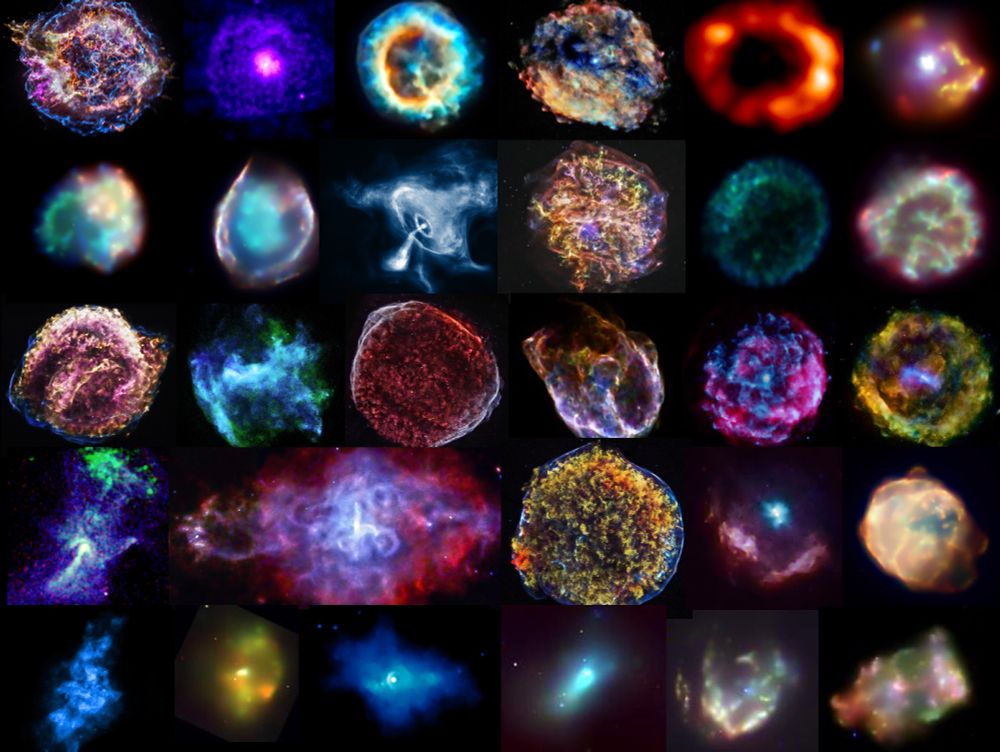
X-ray images of 29 supernova remnants observed with the Chandra X-ray Observatory in the first two years of the mission, 1999-2001. Images are mostly adapted from https://chandra.harvard.edu/press/ and https://hea-www.harvard.edu/ChandraSNR/gallery_gal.html
Making my slides for the "25 Years of Science with Chandra" conference, and here's the supernova remnants imaged with Chandra in the first two years of the mission in the order they were observed! 🔭🧪 #SaveChandra
02.12.2024 21:58 — 👍 211 🔁 45 💬 10 📌 4
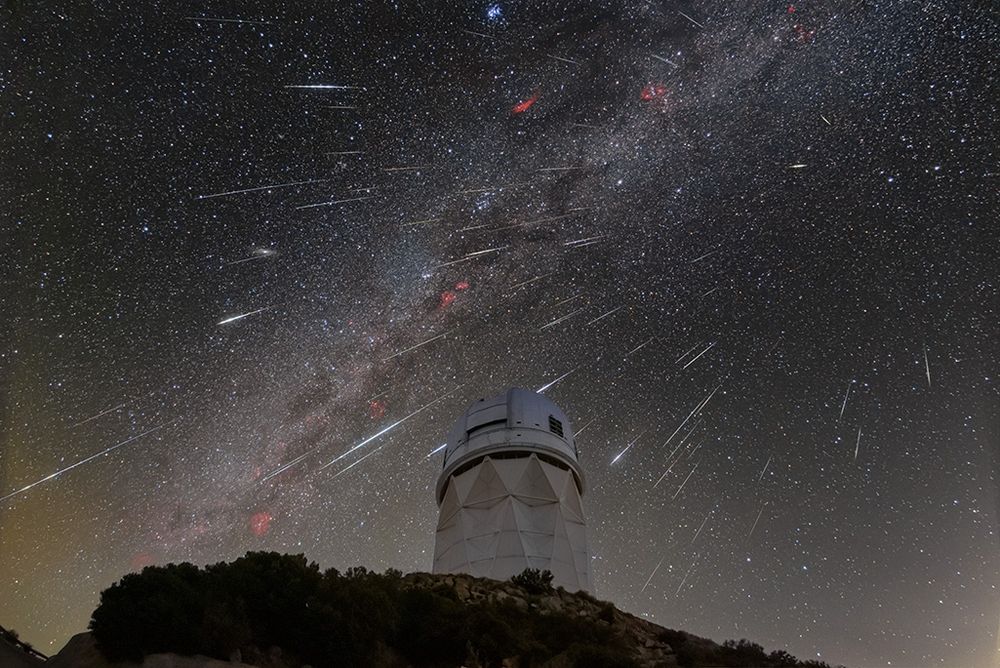
New DESI Results Weigh In On Gravity
Researchers used the Dark Energy Spectroscopic Instrument to map how nearly 6 million galaxies cluster across 11 billion years of cosmic history. Their observations line up with what Einstein's theory...
Big paper day today! 🔭🧪
The newest results from the Dark Energy Spectroscopic Instrument or DESI newscenter.lbl.gov/2024/11/19/n...
8 new papers on the arXiv this morning, including the long awaited analysis of the "full shape" of the galaxy power spectrum, and one led by my PhD student.
20.11.2024 09:01 — 👍 193 🔁 36 💬 4 📌 6
📌 New to Bluesky? 📌
You might be interested in this guide that gives tips on how to use the app: emilydoesastro.com/posts/230824...
You may also be interested in our starter pack with feed & account recommendations: bsky.app/starter-pack...
Feel free to share these resources widely!
05.08.2024 10:22 — 👍 624 🔁 149 💬 26 📌 16
Viewpoints and opinions on issues relating to Low Earth Orbit, including policy, science, governance, and cybersecurity.
Official account of the Education Committee of the American Astronomical Society.
Supporting the mission of AAS through education initiatives, shaping strategy, supporting educators, and advancing science learning.
https://msha.ke/aas_education#info
Planetary scientist and aerospace engineer. He/him. https://www.alejandrosoto.net
Astronomer studying the birth of stars, rust belt academic, connoisseur of beer inspired acronyms, closet Dadaist, & child of immigrant.
FOSS astro-imaging software
Observatory systems
Automation and data storage
Maryland 🦀
PhD in Observational Cosmology. Interested in data science, AI, wildlife photography and traveling to interesting places. #Istanbul #Barcelona #Earth
Astrophysicist at the University of St Andrews. I like to think about large scale structure, galaxies, inclusive pedagogy, and higher education. I also like cake, chips, running, and Pearl Jam.
http://ritatojeiro.co.uk
Bluesky oficial de la Facultad de Ciencias Físicas de la Universidad Complutense de Madrid, UCM @ucm.es
Webpage: https://fisicas.ucm.es
IG: https://www.instagram.com/fisicas_ucm/
Astro/Physicist @Villanova | Philadelphia, PA | research in nonlinear dynamics, accreting compact objects, and wacky time-varying phenomena
any views are my own and not of my employer :) stuff and things
Astrophysicist at University of Bath. Supermassive black holes, galaxy evolution.
Astronomer, writer and zookeeper. Oxford, Gresham and the Zooniverse. The human half of the Dog Stars podcast. New book: 'Our Accidental Universe' (UK/rest of world) and 'Accidental Astronomy (US) now out.
The world's largest and most popular platform for people-powered research. A collaboration between the Adler Planetarium, University of Oxford, University of Minnesota, and friends. Learn more and join: https://linktr.ee/the.zooniverse
computational astrophysicist
open source tool developer
professor
blower upper of stars
star wars fan
coffee aficionado
https://zingale.github.io
Study distant galaxies and the cosmic web at Milan (U Milano-Bicocca); PhD from Johns Hopkins; BSc from Tsinghua.
Data scientist, archivist, and temporal engineer with the Catalina Sky Survey. CSS has discovered about half of all known near-Earth asteroids, including several small impactors, many comets, and a couple of mini-moons. https://catalina.lpl.arizona.edu
she/hers; all things galaxy formation, dark matter & pug related.
Astrophysicist and High Jumper.
https://orcid.org/0000-0003-4351-993X
Astronomy and astrophysics sprinkled with Machine Learning... or the other way around ! PhD student working on Foundation Models for Astronomy. #galaxy






